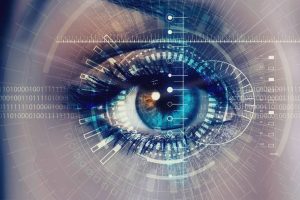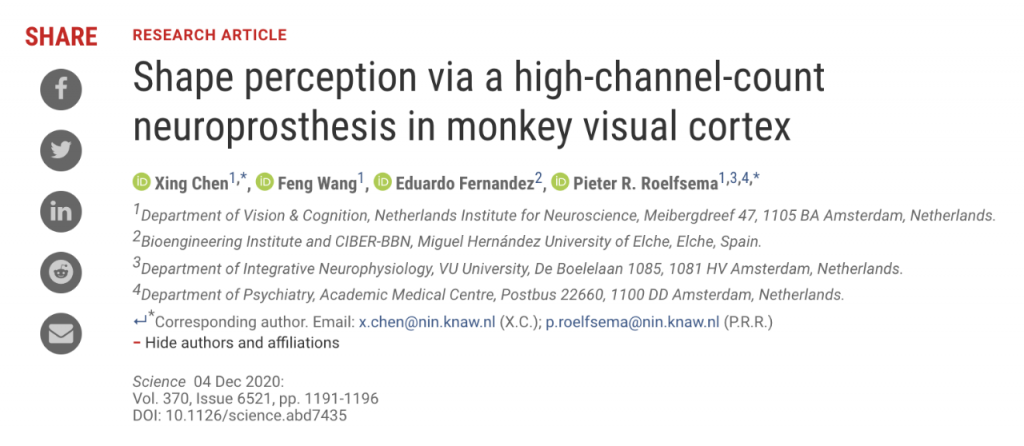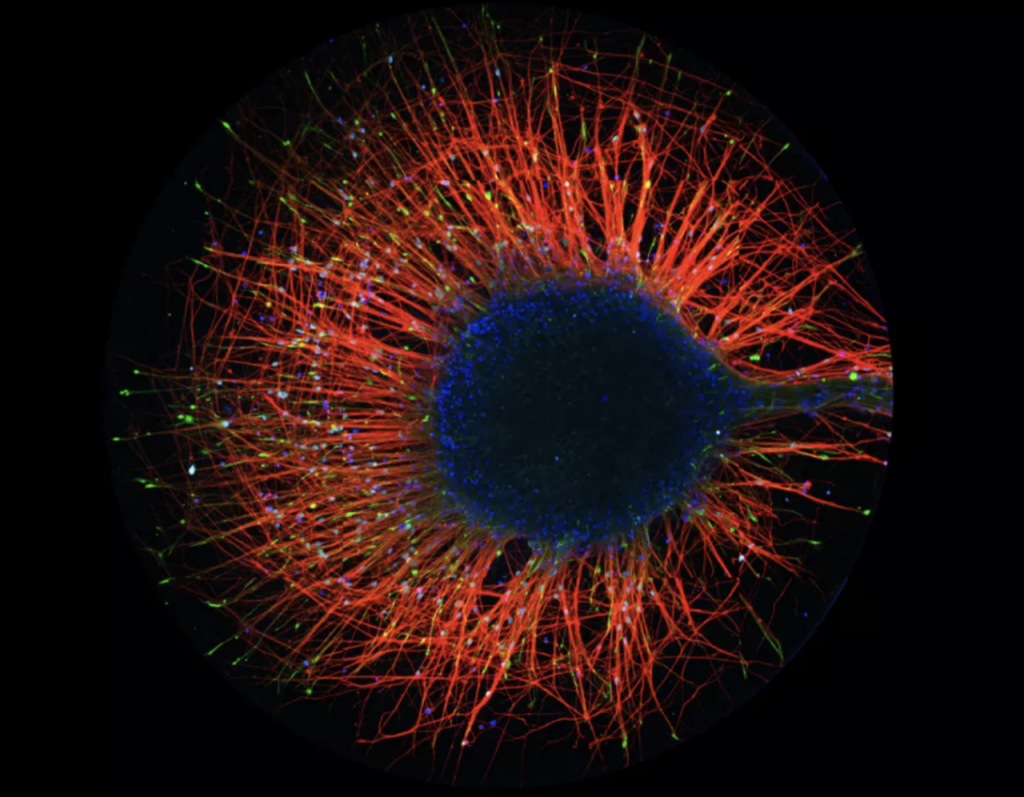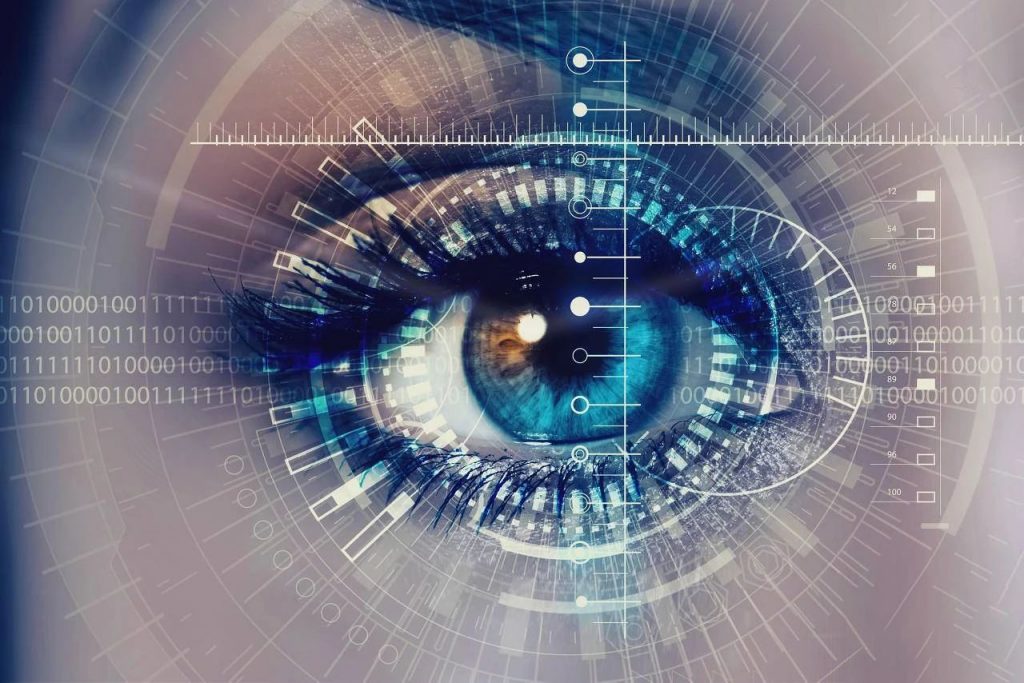
By passing the human eye, just implanting a device into the brain, after electrical stimulation, can blind patients successfully recover their sight?
Yes, yes, this is not a science fiction film, this is a study by scientists on the vision of blind patients.
This kind of research on implanted vision has been going on for decades. Due to the limitations of implanted devices, the current visual pixels that can be reproduced are still very limited.
However, in the latest Science, an important breakthrough has been made in this area: Researchers have developed high-resolution devices that make it possible to reproduce more complex and more pixel visuals.
In the subsequent verification, the device was successfully “seen” by the experimental monkey through electrical stimulation.

This research was brought by a team from universities such as the Netherlands Institute of Neuroscience.
Bypass the human eye, implant vision, high resolution? How is this done? Let us take a closer look.
Vision that bypasses the human eye: optical illusion
The production of vision by bypassing the human eye is achieved through a physiological phenomenon called optical illusion.
You can now close your eyes and press the eyeballs slightly with your hands. Can you feel the aperture?
Yes, this is the light illusion, which is the light sensation produced by the stimulation from the outside world and transmitted to the brain.

In addition to mechanical stimulation, studies have found that electrical stimulation, magnetic stimulation, and drugs can all produce phobias.
As early as decades ago, experiments have shown that when an electric current stimulates a special location in the brain, it will produce optical illusion.
This kind of optical illusion, which directly stimulates the brain, truly makes it possible to “go around the human eye and produce vision.”
High-resolution implant
It is based on this unique connection between electric current and light perception that researchers have been trying to develop an electrode implant as a bridge for research.
Such implants are artificial devices that help generate vision, called cortical vision prostheses (CVPs).
Theoretically, it is possible to convert artificially generated images into electrical signals, stimulate the brain through the device, and finally create perceptible vision.

However, similar implanted electrodes in the past are always limited by position, power, and number, and the resulting phantom perception pixels are often very few.
One of the highlights of this research is that the researchers developed a new device: Compared with the previous, it has a higher resolution and contains an array of 1024 electrodes.
What is the concept of 1024 electrodes? In simple understanding, the stimulation of an electrode can be understood as a pixel.
Under normal circumstances, only 8-15 pixels are needed to create a perception of letter form.
And this time there are 1024 electrodes, which greatly improves the existing perception “pixels”, which lays the foundation for generating more complex phantom images.
Later, in monkey brain experiments, the reliability and effectiveness of this device were also verified.
In the verification experiment, the researchers implanted this electrode device into the visual cortex of two monkeys.
These monkeys have been trained to recognize certain shapes (such as letters) in advance.
The researchers asked the tested monkeys to complete a series of tests from easy to difficult:
Through eye movement, report the position of photic illusion caused by a single stimulus;
Multiple electrodes simultaneously generate micro stimulation, creating a perception in the form of letters;
A series of electrodes perform micro-stimulation to produce movement in a certain direction.
The final result showed that through the implanted artificial device, the monkey can produce visual perception and successfully recognize the shape, which includes moving points, lines and letters.
They can immediately recognize these specific visual shapes as if they were actually seen through the eyes.
See the light again, there are still a few steps
This latest research brings hope. However, to see the light again, there are still a few steps to go.
In the final summary, the researchers listed several key issues that need to be resolved:
On the device, it is necessary to further increase the electrode density, reduce the volume, and increase the pixels;
In terms of communication, it is necessary to create a wireless technology with a high channel count;
In terms of device materials, it is necessary to improve bio compatible electrodes to reduce or avoid side effects of the device on the human body.
However, although there are still several major difficulties to overcome, the high-resolution pixels brought by this research are already a major breakthrough.

Roelfsema, the corresponding author of the study, said:
The number of electrodes we have implanted in the visual cortex and our ability to produce high-resolution artificial pixel images are unprecedented.
There is every reason to believe that the future of the blind can be expected.
Comments